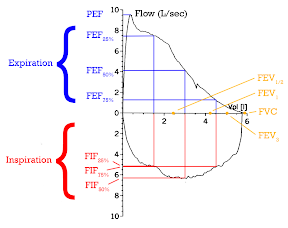 A negative methacholine test should not be relied upon to rule out asthma
A negative methacholine test should not be relied upon to rule out asthmaMethacholine is not as sensitive to identify bronchial hyper-responsiveness (BHR) as previously thought, according to a recent review. A negative methacholine test should not be relied upon to rule out asthma.
Further, a positive methacholine test alone should be interpreted with caution as it may reflect airway injury or remodelling, rather than currently active asthma or exercise-induced bronchoconstriction (EIB).
What is 'direct' and 'indirect' bronchial provocation test (BPT)?
The terms 'direct' or 'indirect' refer to the mechanism by which a BPT causes bronchoconstriction.
For example, methacholine acts directly on bronchial smooth muscle (BSM) receptors causing it to contract and the airways to narrow.
In contrasr, the indirect stimuli (e.g. exercise or mannitol) cause the release of mediators (prostaglandins, leukotrienes and histamine) locally in the airways and these mediators act on BSM receptors to cause contraction.
However, the laboratory protocols currently used for exercise testing have a high failure rate to identify EIB that occurs in the field ("real life").
The other indirect stimulus mannitol is not ideal either. It identified a similar prevalence of BHR to methacholine and identified more patients than a single exercise test in 3 studies. However, neither mannitol nor methacholine identified all patients with EIB. Mannitol has a higher specificity for a physician diagnosis of asthma than methacholine.
Indirect stimuli are now being used to assess athletes, fire fighters, defence force personnel, smokers, children, to evaluate cough, to confirm asthma, and to assess drugs.
Both 'direct' AND 'indirect' tests may be needed for correct diagnosis
Bronchial provocation using both a direct test (methacholine) and an indirect test may be required in some patients to confirm or exclude a diagnosis of asthma with certainty.
If methacholine challenge is negative but FeNO is higher than 30 ppb, perform adenosine challenge to rule out asthma (Ann of Allergy and Imm, 2012).
References:
Bronchial provocation testing: the future. Anderson SD, Brannan JD. Curr Opin Allergy Clin Immunol. 2011 Feb;11(1):46-52. Review.
Bronchial Provocation Testing: The Future: Stimuli Used for Bronchial Provocation Test Act Either Directly or Indirectly. Curr Opin Allergy Clin Immunol. 2011;11(1):46-52, Medscape, 2011.
27% of patients with "physician-diagnosed asthma" had a negative methacholine test - misdiagnosis?
Image source: Spirometry, from Wikipedia, the free encyclopedia, GNU Free Documentation License.